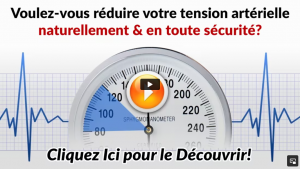The Relation Between Blood Pressure and Headaches: What You Should Know

Blood Pressure and Headaches: A Friendly Introduction
What Exactly Are Blood Pressure and Headaches?
Think of blood pressure as the gentle (or sometimes forceful) push your blood gives against the walls of your arteries, while a headache is that all-too-familiar pain or discomfort you might feel in your head, scalp, or neck. At first glance, they might seem like they’re worlds apart, but believe it or not, there are shared biological pathways linking them. In our day-to-day lives, shifts in blood pressure can sometimes roll in a headache uninvited, making it really worthwhile to get to know both on their own and as part of a bigger picture of health. By breaking down what those blood pressure numbers mean and exploring the many flavors of headaches, we’re setting you up with a solid foundation for a healthier life. Let’s untangle these medical terms with some real-world examples and easy-to-digest explanations.
Getting a grip on what blood pressure and headaches are is like taking the first step to decoding a secret message from your body. Everyone’s heard that high blood pressure is the “silent killer,” and even a simple headache can sometimes serve as a small alarm bell, hinting at deeper issues you might never have guessed were brewing. By keeping things friendly and straightforward, we can dispel the mystery surrounding both and pave the way for a deeper dive later on. It’s all about understanding them individually first, so you can really appreciate why paying attention to both matters.
Why Understanding Their Connection Matters
Realizing that blood pressure and headaches are interconnected could be a game-changer for staying ahead of potential health pitfalls. Many of us brush off recurring headaches as nothing more than stress or fatigue, but they might actually be signaling some ongoing cardiovascular issues. This connection can shine a light on patterns that suggest it might be time for early intervention, ultimately helping to sidestep more serious problems down the road. With all the compelling scientific evidence piling up, it’s super important to know what these symptoms are really trying to tell you.
What's more, once you start understanding this link, you feel more in charge of your own health. It nudges you to keep better tabs on your blood pressure and spark more in-depth chats with your doctor. When you see how your blood pressure ups and downs might set the stage for headache episodes, you can take real steps to manage them before they spiral. This kind of shared knowledge helps bridge the gap between everyday symptoms and the underlying issues that might be at play.
How This All Ties Into Your Overall Wellbeing
The dance between blood pressure and headaches isn’t just about isolated discomfort—it’s a window into your whole body's health. Keeping your blood pressure in check helps all your vital organs function smoothly, while frequent headaches might be hinting at broader systemic problems. Grasping this concept can lead to smarter diagnostic choices and lifestyle tweaks, ultimately reshaping how you handle long-term health. When we discuss blood pressure and headaches, we're really talking about your overall vascular health and quality of life.
For those of us with jam-packed schedules or unpredictable bouts of headaches, understanding what lies beneath the surface can offer clear insights on how to get ahead of the problem. Simple preventive strategies like tweaking your diet, ensuring balanced nutrition, and managing stress can go a long way. As you read on, you’ll pick up practical tips, get a taste of current scientific studies, and discover lifestyle tweaks that together build a strong case for nurturing your vascular health and potentially easing those pesky headaches.
Understanding the Basics of Blood Pressure and Headaches
Breaking Down High and Low Blood Pressure
When your blood pressure is measured, it comes in two numbers: systolic and diastolic. High blood pressure (or hypertension) means these numbers stay above normal ranges, while low blood pressure (hypotension) happens when they drop too low. We often hear about the damage high blood pressure can do over time, chipping away at your arteries and boosting the risk of heart problems. Meanwhile, low blood pressure might leave you feeling dizzy or even faint, and for some, it can trigger headaches too. Recognizing this balance is key to understanding how blood pressure ties into the body’s overall functions.
It all boils down not just to the numbers on a machine, but to the context of your daily life. A bout of stress, a lapse in hydration, or a burst of physical activity can sway those readings in a flash. That's why regular monitoring—and having a chat with your doctor about what those numbers really mean—is so important. When you sharpen your awareness of what’s normal versus what isn’t, you’re in a better spot to discuss any worrisome changes and adjust your lifestyle if needed.
Getting to Know the Different Types of Headaches
Headaches wear many hats, with tension headaches, migraines, and cluster headaches being some of the most common types. Tension headaches usually manifest as a constant pressure or ache around your head, often tied to stress or muscle tension. Migraines, though, are a more complex beast: they might come with nausea, a heightened sensitivity to light, or even visual disturbances, often spurred by various triggers—including shifts in blood pressure. And then there are cluster headaches, known for their intense severity and periodic occurrence, which can really disrupt your day-to-day routine.
Every headache type comes with its own set of triggers and criteria, meaning that a cookie-cutter treatment rarely does the trick. Pinpointing exactly what kind of headache you’re dealing with is crucial for managing symptoms effectively. Here, we invite you to recognize these nuances and appreciate how your body’s response to things like blood pressure changes can range from a mild tension headache to a full-blown migraine.
The Body’s Vascular Role in Headaches
Our blood vessels play a starring role when it comes to headaches, and the way they respond to blood pressure shifts is a big part of the story. When blood vessels tighten up or relax in response to pressure changes, it can lead to physical stress or a drop in blood flow, both of which might kick off headache symptoms. It's a fascinating cascade of events that can vary widely from one person to the next, thanks to factors like genetics and lifestyle. Getting to grips with this process is super important if you’re looking to manage or prevent headache episodes.
This intricate interplay between how your blood vessels behave and how your nerves react has caught the eye of researchers everywhere. There’s solid evidence that changes in your vascular system can influence both the strength and duration of a headache. With insights like these, both patients and healthcare pros can zero in on the triggers, laying down the groundwork for better management and prevention strategies. Armed with this knowledge, you’re better equipped to make smart health decisions.
Unpacking the Connection Between Blood Pressure and Headaches
How Shifts in Blood Pressure Can Stir Up Headaches
Changes in blood pressure aren’t just numbers flipping on a screen—they can literally set off headaches. A sudden spike in blood pressure might cause the blood vessels in your brain to expand, ramping up the pressure inside your skull and leading to that familiar pounding headache. On the flip side, a steep fall in pressure could mean your brain isn’t getting enough oxygen, which could also trigger those painful episodes. It’s a vivid reminder of just how interconnected your body systems really are.
For some folks, these blood pressure swings only matter during moments of high stress or heavy physical exertion, while for others, it’s a more constant headache companion. Keeping tabs on your blood pressure, especially if you’re prone to these wrinkles, can be a lifesaver in avoiding recurrent discomfort. When you understand the triggers, you’re in a better position to anticipate and ease headache episodes before they turn into something more serious.
Diving Into the Science Behind the Connection
There’s been a ton of scientific research digging into how blood pressure changes mesh with headache onset. Studies show that both chronic high blood pressure and those occasional spikes can act as triggers for headache episodes. For example, even people with seemingly well-controlled hypertension might still find themselves battling a headache during peaks in their blood pressure. These findings highlight that managing blood pressure isn’t just about warding off long-term complications—it’s also about smoothing out your day-to-day quality of life.
Researchers continue to unpack these relationships—and while some suggest a more aggressive approach to blood pressure control, others advocate for complementary lifestyle tweaks. The overall takeaway is that a balanced mix of careful blood pressure management combined with good self-care practices can lead to significant improvements in both your vascular health and headache patterns. This evolving science not only shapes clinical guidelines but also gives you, the patient, the power to take control of your health.
Spotting Symptom Patterns
One of the biggest wins in managing blood pressure and headaches is getting really in tune with your body’s signals. Many people start to notice that their headaches tend to pop up at certain times—maybe during a stressful workday or right after a vigorous workout. Jotting down these occurrences in a health diary can reveal intriguing correlations between your blood pressure readings and headache episodes. This kind of record-keeping not only heightens your own awareness but also arms you with key details to share with your doctor.
Recognizing these patterns is a collaborative journey between you and your healthcare provider. If you’re just beginning to see links between your blood pressure fluctuations and headaches, keeping an eye on things could lead to the early identification of more serious issues. As you dig deeper into your own patterns, you might start noticing lifestyle habits or specific triggers that you hadn’t paid much attention to before. This mindful tracking ultimately makes your discussions with your doctor far more productive.
Spotting the Signs and Making a Diagnosis
Early Warning Signs You Shouldn’t Ignore
Sometimes it’s the smallest hints that can make the biggest difference in managing your health. You might find that even a slight dizziness, a bit of blurred vision, or a gentle throbbing near your temples serves as an early heads-up that something’s off—possibly linked to fluctuations in blood pressure. Picking up on these subtle signals can give you a critical window to act before things get too out of hand. Those early signs aren’t about dramatic alarms; they’re more like your body’s soft whisper telling you to pay closer attention.
It really pays off to keep track of these moments, whether by regularly checking your blood pressure or maintaining a headache diary. Early detection can help you tweak your daily habits a bit before a minor issue turns into a major headache drama. When you catch these hints early, you’re taking the first vital step in managing interconnected health challenges.
How Doctors Diagnose Blood Pressure and Headache Issues
When it comes to diagnosing problems related to blood pressure and headaches, doctors usually blend time-tested tests with a careful review of your symptoms. Blood pressure is usually measured with that trusty sphygmomanometer, giving a quick snapshot of your cardiovascular groove. For headaches, doctors might turn to imaging tools like MRIs or CT scans to rule out any serious underlying issues, while also gathering detailed accounts of your experiences. Altogether, these diagnostics help paint a complete picture of both your vascular and neurological health.
Often, your doctor will recommend regular check-ins as part of a broader strategy to track any changes over time. By combining routine lab tests, physical exams, and a close look at your day-to-day symptoms, they can determine whether your headaches are linked to blood pressure fluctuations. This detailed approach not only confirms a diagnosis but also helps in designing a treatment plan that’s tailor-made just for you.
The Perks of Regular Health Check-Ups
Keeping up with regular health check-ups is one of the best strategies when you’re managing something as intertwined as blood pressure and headaches. These routine visits are a chance to catch even the slightest shifts before they snowball into more serious issues. During your appointments, your doctor can track trends in your blood pressure and headache frequency, adjust your medications if needed, and suggest tweaks to your lifestyle that could make a world of difference.
These check-ups are also your safe space to share what you’re experiencing—whether it’s unusual headache patterns, heightened stress, or even changes in your daily habits. This open dialogue helps your doctor create a more personalized approach to maintaining your health. In essence, regular visits build a team-like relationship between you and your healthcare provider, setting you up for long-term well-being.
How Your Lifestyle Plays a Role
Eating Right for Better Blood Pressure and Fewer Headaches
What lands on your plate every day has a huge impact on both your blood pressure and your likelihood of getting headaches. Too much sodium, for example, can push your blood pressure into high territory, potentially setting the stage for headache flare-ups. On the flip side, a diet filled with colorful fruits, veggies, whole grains, and lean proteins can help keep your blood pressure balanced. Don’t forget hydration—sometimes a headache is simply your body’s way of waving the “I need water” flag. Making conscious choices about your diet is one of the simplest, most effective ways to support your vascular health and ward off those nagging headaches.
And it’s not just about salt and water—research shows that overall healthy eating patterns can significantly influence your overall wellbeing. The right balance of nutrients can help stave off blood pressure spikes and reduce the frequency and severity of headaches, creating a ripple effect that benefits your entire body.







